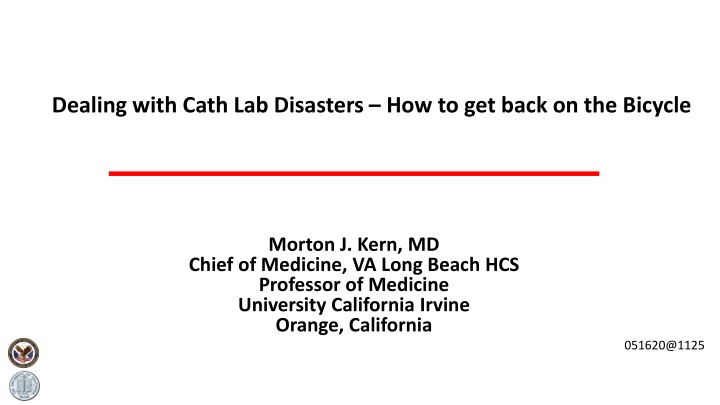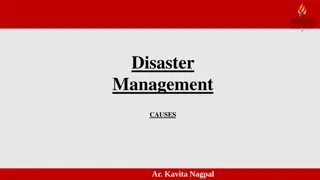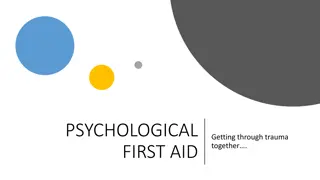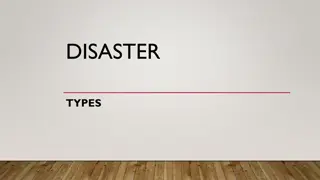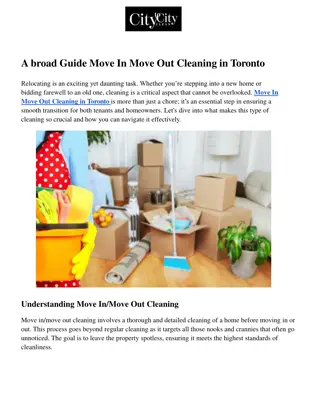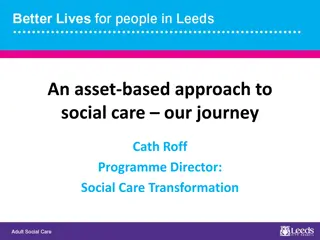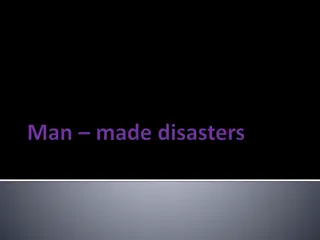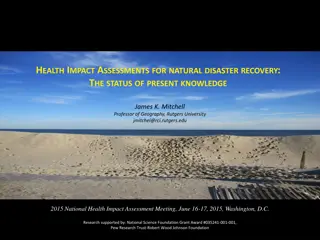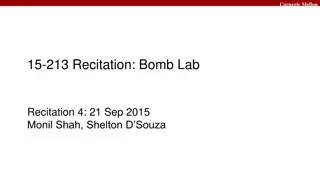Dealing With Cath Lab Disasters - How to Move Forward
Complications are a reality in the cath lab. Learn from disasters, accept responsibility, and take necessary actions to rebuild confidence. Seek emotional support, review procedures, and remember your training to overcome setbacks and resume your practice effectively.
Download Presentation

Please find below an Image/Link to download the presentation.
The content on the website is provided AS IS for your information and personal use only. It may not be sold, licensed, or shared on other websites without obtaining consent from the author.If you encounter any issues during the download, it is possible that the publisher has removed the file from their server.
You are allowed to download the files provided on this website for personal or commercial use, subject to the condition that they are used lawfully. All files are the property of their respective owners.
The content on the website is provided AS IS for your information and personal use only. It may not be sold, licensed, or shared on other websites without obtaining consent from the author.
E N D
Presentation Transcript
Dealing with Cath Lab Disasters How to get back on the Bicycle Morton J. Kern, MD Chief of Medicine, VA Long Beach HCS Professor of Medicine University California Irvine Orange, California 051620@1125
Disclosure: Morton J. Kern, MD Within the past 12 months, the presenter or their spouse/partner have had a financial interest/arrangement or affiliation with the organization listed below. Company Name Abbott Medical Inc. Philips Volcano Inc. Acist Medical Inc. Opsens, Inc. Relationship Speakers Bureau Speakers Bureau Consultant Consultant
Complications will happen. How you prevent and learn from them are the keys to moving forward. Dissection Clot Perforation Arrest Anaphylaxis MI Death Eberhard Grube, and Jan-Malte Sinning JCIN 2019;12:370-372
A personal Story of disasters and coping. I am in my first year of attending at UTHSC San Antonio. I am performing a diagnostic cardiac cath from the arm with Sones technique. On the 2nd angio run, I see the catheter poking the roof of the LM, then the LM closes. The patient gets ischemic, then goes into shock, then has a cardiac arrest. The patient dies. Later, the same year. During a diagnostic coronary angiogram, the patient complains of difficulty breathing, becomes flushed, and hypotensive, tachycardic. Coronary angiogram and LV are normal. Anaphylaxis is diagnosed. Fluids, epi, dopa are given. Pt does not respond. The patient dies. The next year The patient agrees to a research study on external counter pulsation in the cath lab. A dual lumen, high fidelity micromanometer catheter is placed in the LV. The study is completed and on removal of the LV catheter, the patient suddenly has a seizure and right sided paralysis. There is a clot on the catheter. Patient survives but has significant neurologic impairment.
Emotional path after a catastrophic complication Kubler-Ross Grief Cycle
Actions Needed to begin again Accept Responsibility Face the Family Review the procedure Speak with Colleagues Remember you are well trained. Complications happen to everyone.
Actions Needed to begin again It s unavoidable. Talk with a friend. Stay engaged. Do not avoid doing certain cases. Remember you are well trained. Complications happen to everyone.
Actions Needed to begin again Knowledge is power. The truth will set you free You re not the only one who has had a complication
A personal Story of disasters and coping. What did I do to get back on the Horse ? Patient #1: LM dissection, ischemia, death. Actions: Explained what happened to family. Review case with director, presented case at cath conference, spoke to senior colleagues. Used more Judkins catheters. Patient #2: Anaphylaxsis unresponsive to medications, death. Actions: Explained to family. Reviewed case, presented to cath conference, reviewed the literature, spoke to friends. As I was unsure whether I had the skills and competence to continue, I asked VA to conduct external review. No issues were identified and I continued to work as usual. Patient #3: Clot on research catheter, stroke, major disability. Actions: Explained to family. Reviewed heparin procedures, checked potency of heparin. Presented case to IRB and to cath conference. Extra thought given to anticoagulation regimens
Last Words for your Personal Crisis Become more involved with your team. Become a better communicator. Become a healer and a leader.
